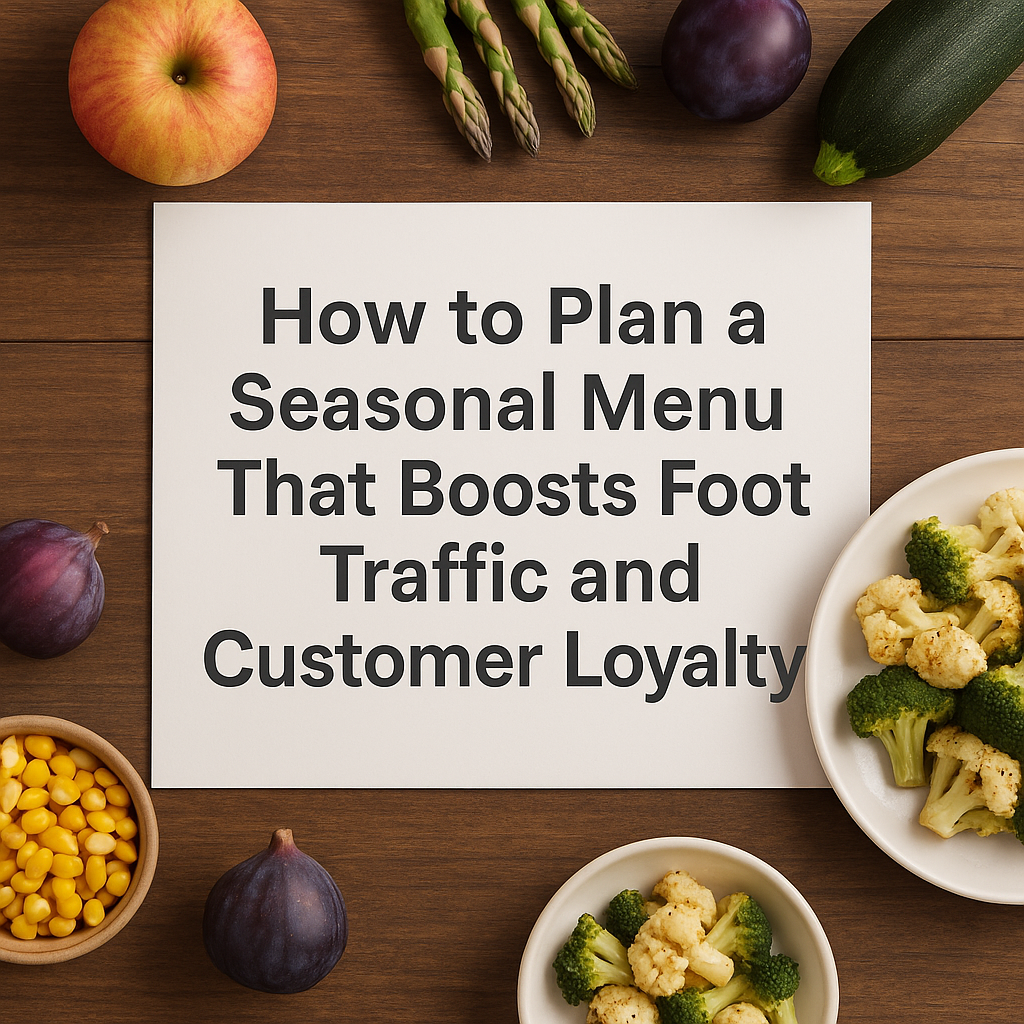At Hospitality Connect, we know variety is the spice of life. For cafés, bars, and restaurants, introducing a seasonal menu is one of the best ways to delight your guests, stand out from competitors, and increase repeat business.
But how do you start planning a seasonal menu that keeps both customers and your bottom line happy?
Let’s explore how to design a successful seasonal menu strategy that works year-round.
Why Create a Seasonal Menu?
Adopting a seasonal menu is more than just a trend — it’s a strategic move for any hospitality business looking to grow. Here are the top benefits:
1. Create Powerful Marketing Opportunities
In today’s competitive hospitality industry, keeping your offering fresh is essential. A seasonal menu launch gives you the perfect opportunity to run a creative marketing campaign, attract new customers, and re-engage regulars.
Announce your new menu across social media, email, and in-store promotions to build excitement and anticipation.
2. Go Local and Highlight Fresh Ingredients
Customers love transparency. By using local, in-season produce, you not only support nearby farmers but also offer a farm-to-table experience that today’s diners value. This approach can easily become your venue’s unique selling point.
3. Stay On-Trend and Relevant
Seasonal menus help your business stay on top of evolving food trends. Whether it’s plant-based dining, locally sourced ingredients, or sustainable cooking, updating your menu each season keeps your brand aligned with customer expectations and current food movements.
Want more marketing inspiration? Check out our guide: How to Market Your Hospitality Business for practical tips to grow your audience.
Choosing the Right Seasonal Ingredients
If you’re unsure where to start, begin with fresh produce that peaks each season. For example:
-
Autumn: Apples, pears, plums, figs, and lemons — ideal for warm desserts and salads.
-
Spring: Asparagus, zucchini, beans, broccoli, and cauliflower bring colour and freshness to any plate.
-
Summer: Think tomatoes, sweetcorn, and berries for vibrant, refreshing dishes.
Pro tip: Incorporating fruit and vegetables that align with the seasons also opens up opportunities to attract vegetarian and vegan diners.
Explore our guide: How to Introduce a Vegan Menu to learn how to diversify your offering.
Key Considerations When Planning a Seasonal Menu
Before you make the switch, there are a few important factors to keep in mind to ensure a smooth transition.
1. Cost of Seasonal Ingredients
Seasonal availability affects pricing. Always factor in potential cost fluctuations and communicate any price changes clearly to your customers. Transparency builds trust.
2. Staff Training and Preparation
A new menu means new preparation methods and workflows. Start training your team early — ideally three to four months before launching — so they’re confident with new dishes and ingredients.
3. Marketing and Menu Launch
Plan your marketing calendar around your seasonal change. Use high-quality photos, behind-the-scenes videos, and storytelling to showcase your upcoming menu. Increase social media activity in the weeks leading up to launch.
4. Printing and Décor Updates
Don’t forget the small details. Budget for menu design and printing, as well as subtle décor changes to reflect the new season. Think cosy touches for winter or bright accents for summer.
Make Your Kitchen Ready for Every Season
To deliver your new menu seamlessly, your kitchen needs to be flexible, efficient, and well-equipped.
Investing in multi-use commercial appliances like food processors, mixers, and prep machines helps streamline your workflow throughout the year.
With the right equipment — from Thermaster refrigeration to Waldorf cooking ranges and Robot Coupe food processors — your kitchen can adapt effortlessly to every menu change.
At Hospitality Connect, we supply the latest commercial kitchen solutions to help you run a more efficient, profitable, and innovative restaurant.
Final Thoughts
Creating a seasonal menu isn’t just about changing ingredients — it’s about refreshing your brand experience.
By combining smart planning, local sourcing, and the right equipment, your restaurant or café can stay exciting and relevant all year long.










